
Concept explainers
To discuss:
How do you think that you would respond in a similar situation? Why?
Case summary:
The nursing student was taking care of Ms. W with an external fixation device on her right leg. Her tibia had broken and she had undergone to correct the fracture. The patient was admitted for the treatment of infection caused by the external device. The nursing student was assigned to take care of the patient on the discharge day. The nurse asked this student to bring this patient to car when she was ready to leave. The nursing student had couple of choices whether to transfer the patient alone or to seek some assistance.
Explanation of Solution
In a similar situation, the nursing student might explain to the nurse about her willingness to transfer the patient. At the same time, the nursing student should also reveal the nurse about her lack of skills on doing it on own. The nursing student might ask the nurse to assist in transferring the patient.
To discuss:
What does this tell you about yourself and about the adequacy of your skills for professional practice?
Case summary:
The nursing student was taking care of Ms. W with an external fixation device on her right leg. Her tibia had broken and she had undergone to correct the fracture. The patient was admitted for the treatment of infection caused by the external device. The nursing student was assigned to take care of the patient on the discharge day. The nurse asked this student to bring this patient to car when she was ready to leave. The nursing student had couple of choices whether to transfer the patient alone or to seek some assistance.
Explanation of Solution
The nursing student was under the learning phase only. The nursing student could learn from the experience and could gain knowledge and skills for the future professional practice.
To discuss:
Do you agree with the criteria that the nursing student used to evaluate a successful outcome?
Case summary:
The nursing student was taking care of Ms. W with an external fixation device on her right leg. Her tibia had broken and she had undergone to correct the fracture. The patient was admitted for the treatment of infection caused by the external device. The nursing student was assigned to take care of the patient on the discharge day. The nurse asked this student to bring this patient to car when she was ready to leave. The nursing student had couple of choices whether to transfer the patient alone or to seek some assistance.
Explanation of Solution
The criteria which the nursing student used to evaluate a successful outcome are:
- The patient could receive the highest quality of care and less amount of pain during the transfer.
- The nursing student could learn from this experience and could gain knowledge and skills for the future practice.
- The patient should not be harmed and should by benefited by the action took by the nursing student.
All these criteria were found be agreed because the fundamental principle of nursing is to provide safe care to the patient in a beneficial manner. Following these criteria would provide a successful outcome in the patient’s well-being.
To discuss:
Are there any other criteria that would be appropriate to use?
Case summary:
The nursing student was taking care of Ms. W with an external fixation device on her right leg. Her tibia had broken and she had undergone to correct the fracture. The patient was admitted for the treatment of infection caused by the external device. The nursing student was assigned to take care of the patient on the discharge day. The nurse asked this student to bring this patient to car when she was ready to leave. The nursing student had couple of choices whether to transfer the patient alone or to seek some assistance.
Explanation of Solution
It is always better to be over-prepared than under-prepared. The nursing student should have some discussion with the nurse or physical therapist on how to transfer the patient before taking the patient to the car. This action might avoid unnecessary difficulties on transferring the patient.
To discuss:
Did the nursing student meet the criteria? Why or why not?
Case summary:
The nursing student was taking care of Ms. W with an external fixation device on her right leg. Her tibia had broken and she had undergone to correct the fracture. The patient was admitted for the treatment of infection caused by the external device. The nursing student was assigned to take care of the patient on the discharge day. The nurse asked this student to bring this patient to car when she was ready to leave. The nursing student had couple of choices whether to transfer the patient alone or to seek some assistance.
Explanation of Solution
The nursing student was found to meet the criteria of learning from the experience and gaining knowledge and skills for future professional practices.
To discuss:
What knowledge, skills, and attitudes do you need to develop to continuously improve the quality and safety of care for patients like Ms. W?
Case summary:
The nursing student was taking care of Ms. W with an external fixation device on her right leg. Her tibia had broken and she had undergone to correct the fracture. The patient was admitted for the treatment of infection caused by the external device. The nursing student was assigned to take care of the patient on the discharge day. The nurse asked this student to bring this patient to car when she was ready to leave. The nursing student had couple of choices whether to transfer the patient alone or to seek some assistance.
Explanation of Solution
Before transferring the patient, the nursing student should learn how to transfer the patient properly. The nursing student should ask for help whenever he or she thinks that it may need it for transferring the patient. These actions are needed to develop to continuously improve the safety and quality of care for the patients like Ms. W.
Want to see more full solutions like this?
Chapter 33 Solutions
FUND.OF NURSING BUNDLE >BI<
- • Define the first stage of labour. • Describe the physiology of the first stage of labour. • Enumerate any four (4) potential complications during puerperium and highlight key measures to manage these complications.arrow_forward• Define obstetric emergencies and state and briefly explain any two (2) maternal, foetal, and obstetric complications that require immediate intervention. • Explain how mental health services can be effectively integrated into maternal and child health, viz-a-viz early childhood development. • Enumerate any four (4) foetal malpresentations in pregnancy and briefly explain their implication in labour while also highlighting their causes and possible complications.arrow_forward• Briefly highlight the physiological changes in pregnancy in relation to cardiovascular and endocrine systems, as well as the uterus and the skin. • Discuss the current antenatal care approach for pregnant women and provide the highlight of activities conducted during woman’s antenatal visit, clearly describing the steps needed for successful antenatal care. • Enumerate any three (3) abnormalities related to placental development and their implications to pregnancy or childbirth.arrow_forward
- 58 64. Rhythm: Clues: Rhythm: Clues: 62 Rhythm QRS Complex Rates PRI Interpretation Rhythm: P wave QRS Complex Rate PRI Interpretation Rhythm: Clues: Rhythm P wave: QRS Complex Rate PRI Interpretation: Rhythm: P wave: QRS Complex: Rate: Interpretation: 67 Rhythm: P wave: QRS Complex: Rate: PRI Interpretation: Rhythm: P wave: QRS Complex: Rate: PRI Interpretation: 68 Rhythm P waves QRS Complex Rate PRI Interpretation Rhythm P wave QRS Complex Rhythm: P wave QRS Complex: Rate PRI Interpretations Rate PRI Interpretationarrow_forward51. 52. 53. Rhythm: Clues: Rhythm: Clues: Rhythm: Clues:arrow_forwardRegularity- Rate- P waves- PRI- QRS- Interpretation- atrial dysrthmia,junctional dysrthymia,and ventricular rhythm,heart blocks,normal sinus,PVCarrow_forward
- normal sinus,atrial dysrthmia,junctional dysrthymia,and ventricular rhythm,heart blocks,PVCarrow_forwardnormal sinus,atrial dysrthmia,junctional dysrthymia,and ventricular rhythm,heart blocksarrow_forwardA 40-year-old male farmer was rushed to an ER with complaints of fever, abdominal pain/tenderness, nausea and vomiting. Clinical examination and investigations revealed diagnosis of typhoid perforation and he was booked for exploratory laparotomy. Explain in detail the pre - operative care of this patient.arrow_forward
- As a nursing student wanting to do preceptorship at ICU or ER, answer the following question: Why are you requesting this site? How will this unit meet your learning needs?How will this unit contribute to your professional goals?arrow_forwardAs a nursing student wanting to do preceptorship at the cancer clinic. Answer the following question. Why are you requesting this unit? How will this site meet your learning needs? How will this unit contribute to your professional goals?arrow_forward40. Rhythm (regular or irregular):. Rate: P wave: PR interval: QRS: Interpretation:arrow_forward
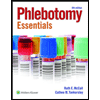 Phlebotomy EssentialsNursingISBN:9781451194524Author:Ruth McCall, Cathee M. Tankersley MT(ASCP)Publisher:JONES+BARTLETT PUBLISHERS, INC.
Phlebotomy EssentialsNursingISBN:9781451194524Author:Ruth McCall, Cathee M. Tankersley MT(ASCP)Publisher:JONES+BARTLETT PUBLISHERS, INC.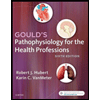 Gould's Pathophysiology for the Health Profession...NursingISBN:9780323414425Author:Robert J Hubert BSPublisher:Saunders
Gould's Pathophysiology for the Health Profession...NursingISBN:9780323414425Author:Robert J Hubert BSPublisher:Saunders Fundamentals Of NursingNursingISBN:9781496362179Author:Taylor, Carol (carol R.), LYNN, Pamela (pamela Barbara), Bartlett, Jennifer L.Publisher:Wolters Kluwer,
Fundamentals Of NursingNursingISBN:9781496362179Author:Taylor, Carol (carol R.), LYNN, Pamela (pamela Barbara), Bartlett, Jennifer L.Publisher:Wolters Kluwer,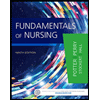 Fundamentals of Nursing, 9eNursingISBN:9780323327404Author:Patricia A. Potter RN MSN PhD FAAN, Anne Griffin Perry RN EdD FAAN, Patricia Stockert RN BSN MS PhD, Amy Hall RN BSN MS PhD CNEPublisher:Elsevier Science
Fundamentals of Nursing, 9eNursingISBN:9780323327404Author:Patricia A. Potter RN MSN PhD FAAN, Anne Griffin Perry RN EdD FAAN, Patricia Stockert RN BSN MS PhD, Amy Hall RN BSN MS PhD CNEPublisher:Elsevier Science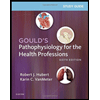 Study Guide for Gould's Pathophysiology for the H...NursingISBN:9780323414142Author:Hubert BS, Robert J; VanMeter PhD, Karin C.Publisher:Saunders
Study Guide for Gould's Pathophysiology for the H...NursingISBN:9780323414142Author:Hubert BS, Robert J; VanMeter PhD, Karin C.Publisher:Saunders Issues and Ethics in the Helping Professions (Min...NursingISBN:9781337406291Author:Gerald Corey, Marianne Schneider Corey, Cindy CoreyPublisher:Cengage Learning
Issues and Ethics in the Helping Professions (Min...NursingISBN:9781337406291Author:Gerald Corey, Marianne Schneider Corey, Cindy CoreyPublisher:Cengage Learning





